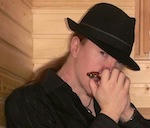apskarp
303 posts
Aug 09, 2010
1:21 AM

|
So I started to do this customization thing now with this kind of scientific approach, where I:
1) first play OOB harp for few days
2) then do basic gapping(+arcing) and play few days
3) do embossing and play few days
4) do chamfering and rough tuning and play few days
5) wax the reeds and make fine tuning + gapping and that's it
It is really educating to do this as then you really understand the effect of these techniques to the playability.
What I found out with this Special 20 A-harp is as follows:
1) It was ok
2) Improvement was really big - I could do 4,5,6 OB's really easily. It actually felt like there's no need to do anything else for this harp
3) Embossing made a difference after all. All the bends were better and the response was excellent. No need to do anything else for this harp
4) Would'n believe it, but after the chamfering the responsiveness of the harp changed a LOT. Now this really feels like an instrument, which you can utilize with difficult passages and have precision over the playing.
I wonder what would change if I'd put flat sanded comb to this harp, as the plastic cover surely isn't as air-tight. (I might also try out some sealing for the plastic comb..)
----------

Youtube
Hoodoo Sauna
Blog
|
GermanHarpist
1675 posts
Aug 09, 2010
2:56 AM

|
Did you retune the harp after chamfering? How much was it off?
|
apskarp
304 posts
Aug 09, 2010
5:55 AM

|
Yes, the rough tuning. Most of the reeds were about 15 cents flat (from the ET). That is my experience from the other harps too, so the chamfering seems to flatten the reed even though it seems that you take more metal off from the tip - apparently the spring dynamics doesn't work that way linearly..
----------

Youtube
Hoodoo Sauna
Blog
|
CamiloHarper
13 posts
Aug 09, 2010
7:04 AM

|
Could you tell me what is chamfering?? (I think I never heard that process before)
By the way, very nice exercise, I never done it myself. When I try to do some customizing I do it all together, but by the way you did it you can tell the effects of very part-
Thanks!!
----------
With some latin flavour for you, chico!! :P
|
apskarp
305 posts
Aug 09, 2010
11:36 AM

|
Chamfering is explained there, although they use the term "corner rounding". I you search this forum you can find more info on this..
----------

Youtube
Hoodoo Sauna
Blog
|
Tuckster
700 posts
Aug 09, 2010
12:20 PM

|
apskarp-very nicely done! Scientific and such. That link for chamfering gives somewhat sketchy details. Aren't you only supposed to chamfer the edges furthest from the slot?
|
apskarp
306 posts
Aug 10, 2010
3:17 AM

|
Yes. If you think about how the sound is formed, it isn't actually the reed that produces the sound (like guitar string), but rather it is formed by the reed closing and opening the slot in rapid phase - just like vocal chords produce the sound. I assume that the reeds have little bit sound of their own too, but mostly it is the opening/closing.
So, if you would chamfer the slot-side of the reed it would not close the slot so precisely and it would also leak air seriously. So the chamfering is done only to the opposite side of the reeds.
----------

Youtube
Hoodoo Sauna
Blog
|
HarveyHarp
93 posts
Aug 10, 2010
8:02 AM

|
Aspkarp is correct about chamfering only the top edges of the reeds. A couple of years ago, when I started to camfer my reeds, I figured that if camfering one side made so much of a differance, then doing both sides would be even better. So, I removed all the reeds from an A Harp, and camfered both sides and screwed all the reeds back on. It took forever, and when I got it all tuned and adjusted, it really played easy, I mean really easy. you barely had to breathe but the reeds had no character at all, and no punch, if you know what I mean. It was a bad idea.
----------
 
|